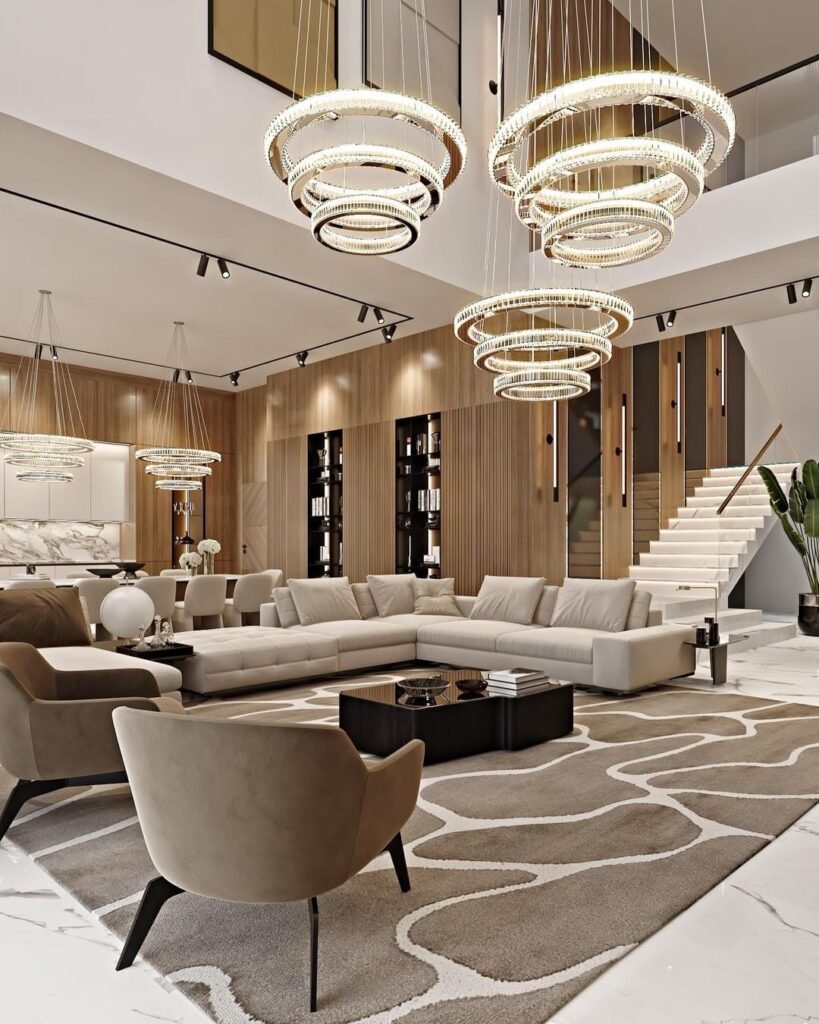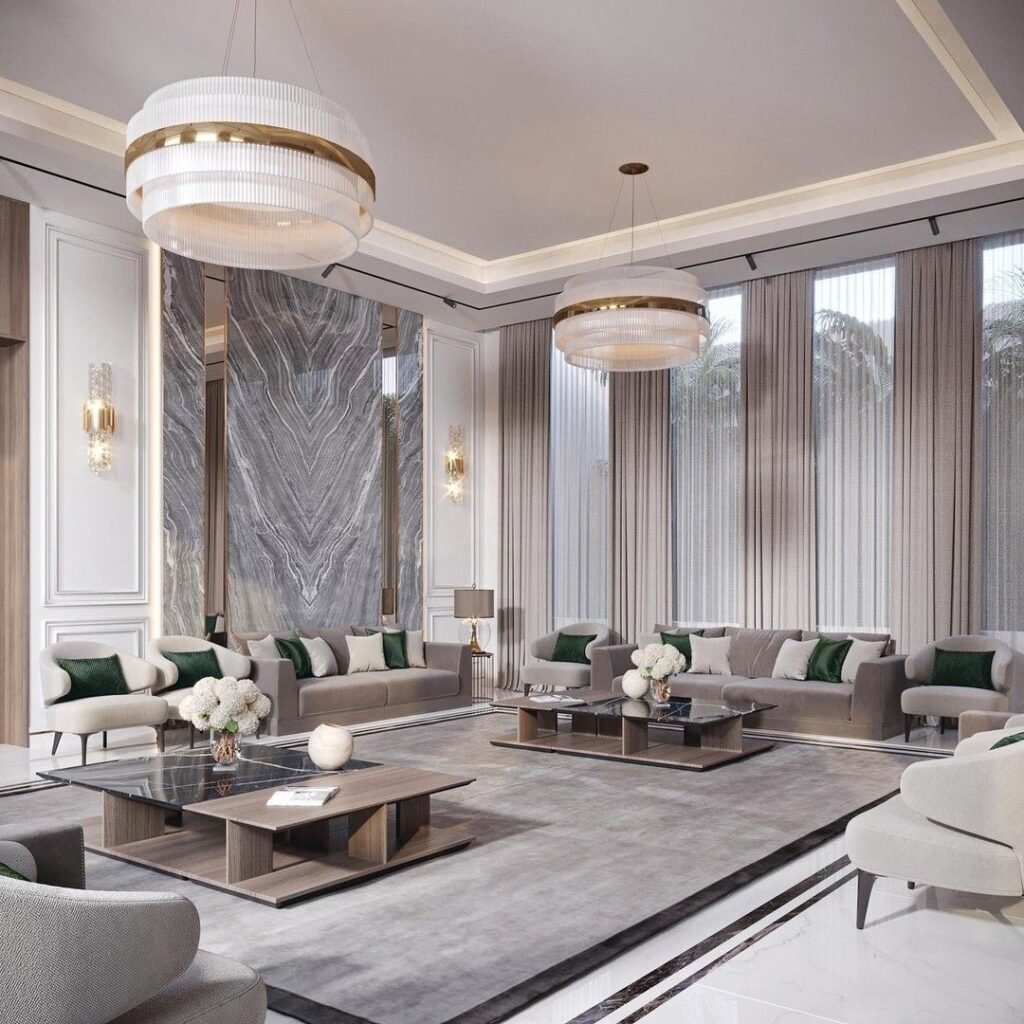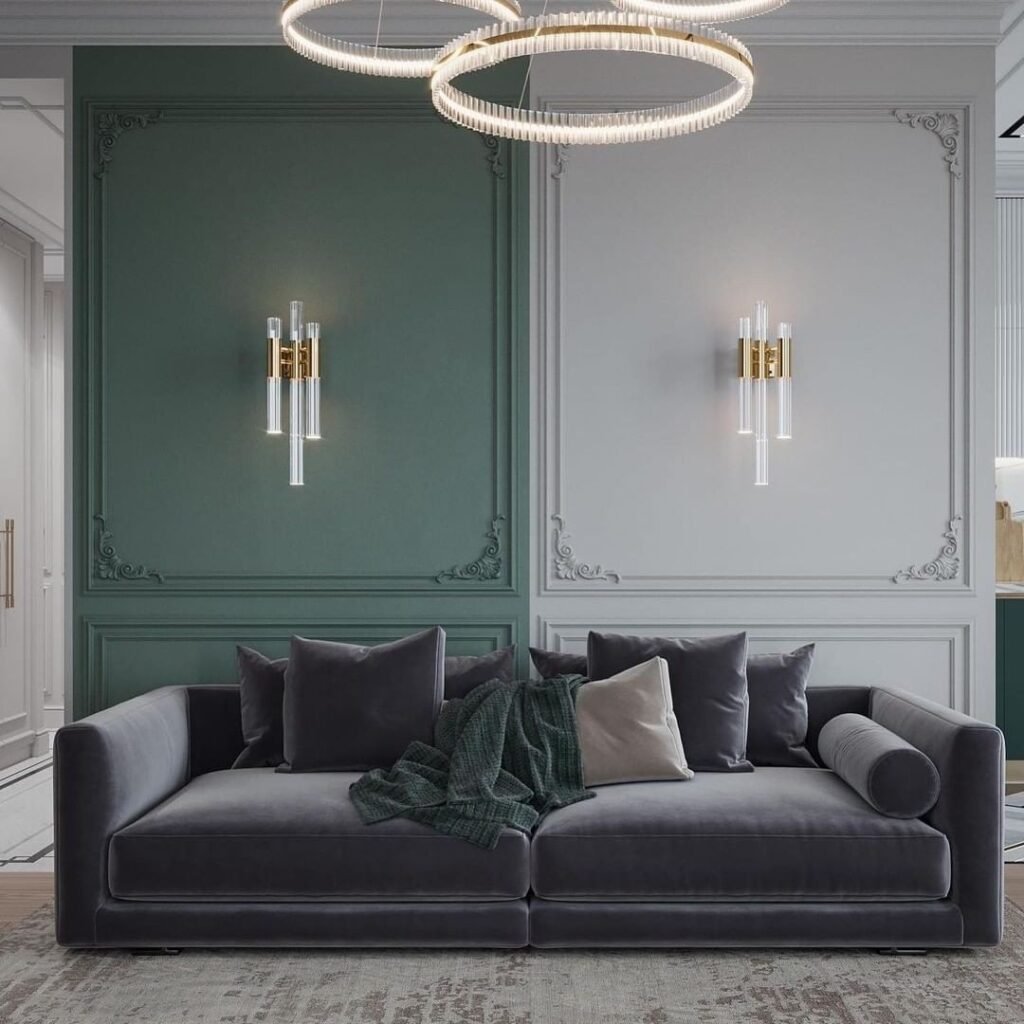How Many Lamps in a Living Room? Lighting Tips & Ideas
Getting the lighting right in your living room can feel overwhelming. Too few lamps leave you squinting at your book, while too many create a cluttered, over-illuminated space that feels more like a showroom than a home.
The truth is, there’s no magic number that works for every living room. The ideal lamp count depends on your room’s size, layout, natural light, and how you actually use the space. A cozy reading nook needs different lighting than an entertainment area designed for movie nights.
This guide will walk you through the key factors that determine how many lamps your living room needs, from understanding different types of lighting to creating the perfect ambiance for your lifestyle. By the end, you’ll have a clear roadmap for illuminating your space beautifully and functionally.
Understanding the Three Types of Living Room Lighting
Before counting lamps, you need to understand how different types of lighting work together. Professional designers rely on a layered approach that combines three distinct lighting categories.
Ambient Lighting: Your Foundation Layer
Ambient lighting provides the general illumination that fills your entire living room. This foundational layer typically comes from ceiling fixtures like chandeliers, pendant lights, or recessed lighting. However, floor lamps with soft, diffused shades can also contribute to ambient lighting by bouncing gentle light off walls and ceilings.
For most living rooms, you’ll want one primary ambient light source supplemented by one or two floor lamps that add to the overall brightness without creating harsh shadows.
Task Lighting: Focused Illumination
Task lighting delivers focused light for specific activities like reading, working on puzzles, or using a laptop. Table lamps on end tables, adjustable floor lamps near seating areas, and desk lamps all fall into this category.
Count how many task areas you have in your living room. A reading chair needs its own lamp, as does a workspace or crafting corner. Each task area typically requires one dedicated lamp positioned to minimize shadows and glare.
Accent Lighting: Adding Drama and Style
Accent lighting highlights decorative elements like artwork, architectural features, or collectibles. These lamps create visual interest and add depth to your room’s design. Wall sconces, picture lights, and small spotlights serve this purpose.
The number of accent lamps depends on how many features you want to highlight. Not every decorative element needs its own light source—choose the pieces that matter most to you.
Room Size Guidelines for Lamp Placement
Your living room’s dimensions play a crucial role in determining lamp quantity and placement. Here’s how to approach different room sizes.
Small Living Rooms (Under 150 Square Feet)
Compact spaces can easily become overwhelmed with too many light sources. For small living rooms, aim for:
- One ceiling fixture for ambient lighting
- Two to three additional lamps maximum
- One table lamp near the main seating area
- One floor lamp in a corner or beside a chair
Focus on multi-functional pieces like swing-arm floor lamps that can provide both ambient and task lighting.
Medium Living Rooms (150-300 Square Feet)
Medium-sized rooms offer more flexibility for layered lighting. Consider:
- One primary ceiling fixture
- Three to five lamps total
- Table lamps on both end tables flanking a sofa
- One floor lamp for additional ambient lighting
- One accent lamp to highlight artwork or architectural features
Large Living Rooms (Over 300 Square Feet)
Spacious living rooms often have multiple seating areas or zones that each need their own lighting. Plan for:
- Multiple ceiling fixtures or one large statement piece
- Five to seven lamps distributed across different zones
- Task lighting for each seating area
- Floor lamps to fill dark corners
- Accent lighting for multiple decorative elements
Large rooms benefit from having lamps at different heights to create visual layers and prevent the space from feeling flat.
The Role of Natural Light
Your room’s natural light significantly impacts how many artificial light sources you need. South-facing rooms flooded with sunlight require fewer lamps during the day but need adequate evening lighting. North-facing rooms with limited natural light might need additional lamps even during daytime hours.
Take note of how natural light moves through your space throughout the day. Areas that remain dim even with curtains open are prime candidates for additional lamps.
Creating Functional Lighting Zones
Think of your living room as a collection of zones, each with its own lighting needs. Common zones include:
Seating Areas: Each seating group needs task lighting for reading and ambient lighting for conversation. A sofa typically needs table lamps on both ends, while individual chairs benefit from nearby floor lamps.
Entertainment Zones: Areas around TVs or gaming setups need soft ambient lighting to reduce eye strain. Avoid placing bright lamps directly behind screens, which create glare.
Conversation Areas: Multiple seating areas arranged for socializing need even, flattering light. Focus on ambient and accent lighting rather than task lighting in these zones.
Traffic Paths: Ensure walkways between furniture have adequate lighting to prevent accidents, especially in the evening.
Practical Lamp Placement Tips
Strategic placement maximizes the effectiveness of each lamp while creating a cohesive lighting scheme.
Height Considerations
Table lamps should position their light source at eye level when you’re seated. Floor lamps work best when their shades are roughly at shoulder height for people sitting nearby. This prevents glare while providing optimal illumination.
Avoiding Common Mistakes
Don’t place all your lamps at the same height—this creates a flat, uninteresting lighting scheme. Mix table lamps, floor lamps, and wall-mounted options for visual variety.
Avoid pushing lamps against walls where they’ll cast harsh shadows. Pull them slightly into the room to allow light to spread more evenly.
Balancing Light Distribution
Distribute lamps throughout the room rather than clustering them in one area. Each corner of your living room should have some source of light, whether from a lamp or reflected light from other sources.
Choosing the Right Bulbs and Fixtures
The type of bulbs and lamp shades you choose affects how much light each fixture provides, which impacts how many lamps you’ll need overall.
Warm white LED bulbs (2700K-3000K) create a cozy atmosphere perfect for living rooms. Cool white bulbs work better for task lighting in work areas. Dimmer switches give you flexibility to adjust lighting levels throughout the day.
Lampshades significantly impact light output. Light-colored, translucent shades spread gentle light throughout the room, while dark or opaque shades direct light up and down but not through the sides.
Budget-Friendly Lighting Solutions
Creating great living room lighting doesn’t require expensive fixtures. Focus your budget on one or two statement pieces, then fill in with affordable table lamps and floor lamps from discount retailers.
Consider shopping secondhand for unique vintage lamps that add character. Often, these just need new shades or updated bulbs to look fresh and modern.
String lights or LED strip lights can provide accent lighting at a fraction of the cost of traditional fixtures. Use them to highlight shelving, artwork, or architectural details.
When to Add or Remove Lamps
Your lighting needs may change over time. Add lamps if you find yourself frequently struggling to see for tasks, if certain areas feel consistently dark, or if you’ve rearranged furniture and created new seating areas.
Remove lamps if your space feels cluttered, if you’re not using certain areas of the room, or if you’ve added more natural light through new windows or mirrors.
Conclusion
Most living rooms function well with four to six lamps total, including table lamps, floor lamps, and accent lights. This number works in addition to your primary ceiling fixture, not including it.
Start with the essentials: one lamp for each main seating area and one floor lamp for ambient lighting. Then add accent lamps for decorative elements you want to highlight. You can always adjust by adding or removing lamps as you live with the space.
Remember that lighting is deeply personal. What feels cozy to one person might feel dim to another. Trust your instincts about what feels right in your space, and don’t be afraid to experiment with different arrangements until you find your perfect balance.
The key is creating a lighting scheme that serves both your practical needs and your aesthetic preferences, turning your living room into a space that truly feels like home.



